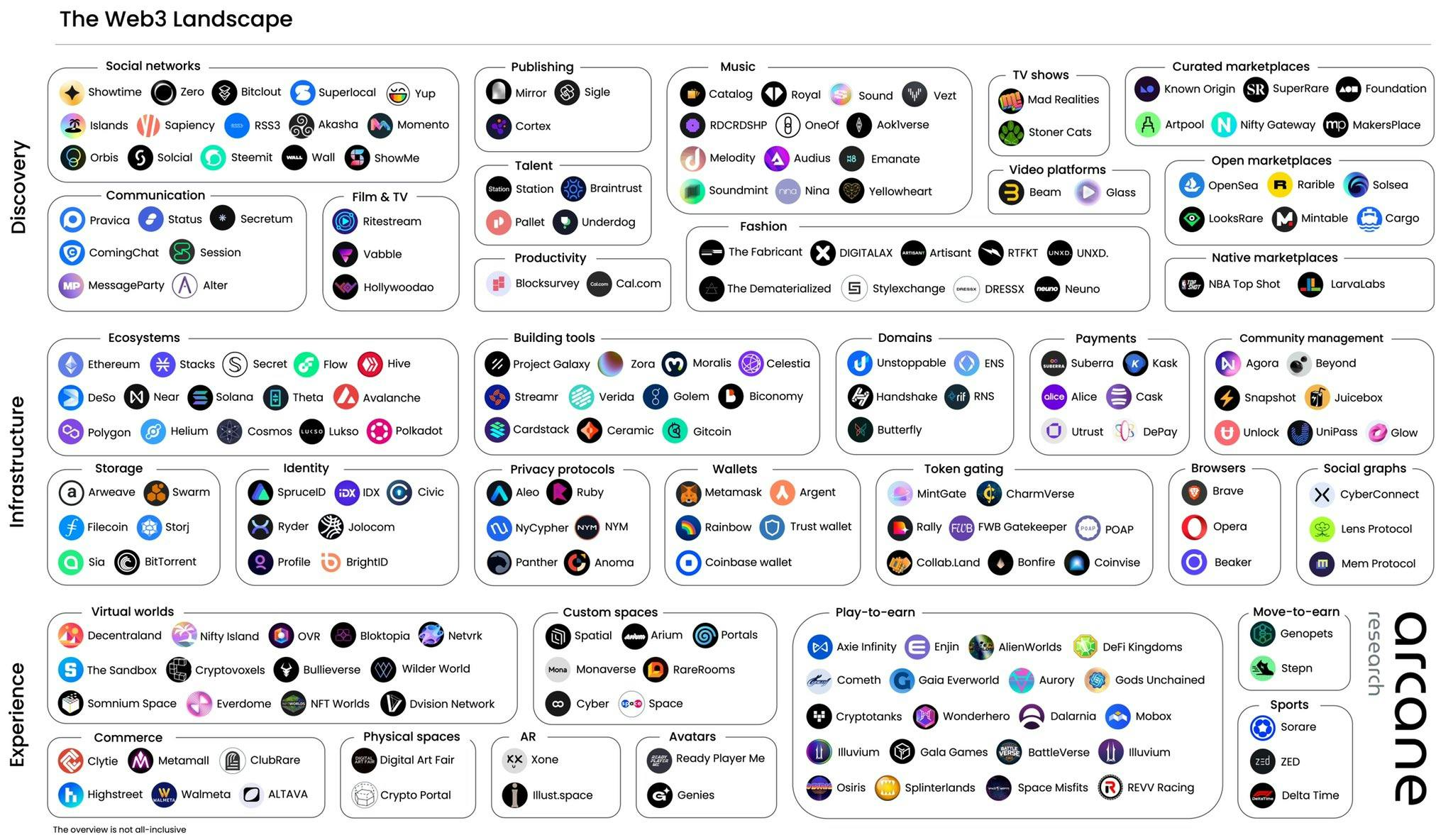A general overview of talent networks in web3.

Web3 has become a popularized idea as of late. Above is a market map that was provided by analyst Sofia Blikstad at Arcane Research. There are currently 4 notable platforms for talent opportunities within web3. They are Station, Braintrust, Pallet, and Underdog in no particular order.
Talent
Station

Station is a decentralized infrastructure that aims to connect the tracks of web2 to web3 through proposals and grants. The company emphasizes that proposals are essential for the continued transition of web2 to web3. Grants which are created by DAOs, enable station members to contribute to their selected DAO. Both a proposal and grant can be funded to their choosing. Station is a bridge that enables the synergistic opportunity between web2 and web3.
Key Points
-
Proposals can be seen by all DAOs affiliated with Station
-
Grants enable participants to contribute to DAOs
-
DAOs can present proposals and project
Braintrust

Braintrust is the first decentralized user owned and governed talent network. The project operates on the Ethereum blockchain and uses the ERC-20 token to distribute its $BTRST token. Braintrust is similar to web2 platforms such as Toptal, Upwork, or Fiverr. Users will still create their profiles and access job opportunities, similar to current talent networks. The uniqueness of braintrust is the opportunity to earn token rewards and returned value. There are three ways to earn $BTRST token, and that is through staking, referring Talent (user) or Client (company), and buying on market. Value is created and preserved by allowing the talent member to keep their acquired earnings because of braintrusts 0% platform fee, and token rewards through referrals.
Key Points
-
Currently focuses on technology industry
-
Utility token incentivizes network growth and participation
-
%0 platform fee allows talent users to retain all earnings
Pallet

Pallet is a platform that emphasizes hiring talent through community. The core components of the platform are Job Boards and Talent Collectives. Job boards allow companies to provide opportunities to pallet curators. Curators are pallet partners that provide their network as their service. Some notable contributors to pallet are Sahil Bloom and Packy McCormick. Curators then collaborate with companies to promote open opportunities on their network. This process incentivizes both parties, in that the curator is compensated for presenting provided roles from companies that need them filled. Talent collectives are a compilation of talent profiles found in a curators community. Here, a curator invites found talent into their network. Then, selected talent is compiled into a collective group in which businesses can ask curators for introductions.
Key Points
-
Value is created through community
-
Beneficial for content creators with large following
-
Increases job post visibility
Underdog Protocol

Underdog Protocol is a talent community that allows participants the opportunity to invest in an individual’s potential career. Consider underdog as a digital representation of a person that has become internalized into the Solana blockchain. With that, the project offers a different approach to personal branding and networking. The difference is that users are able to create their own social token built on the blockchain and distribute or reward their network. The project consists of two parts, Underdogs and Supporter. Underdogs are experienced individuals that have developed their web2 careers. Supporters are members that have been invited by underdog creators and offered career tokens. Tokens are what give the supporter the chance to chance to invest in underdog creators if they see the potential. Doing so lets underdog creators build and establish their digital community.
Key Points
-
Digital business card
-
Investing in others growth and being rewarded
-
Transparency of a persons career growth
Final thoughts
The adoption of web3 through talent networks makes for an interactive, different, and interesting process. However, transitioning from web2 to web3 will be difficult. Despite the challenges of scale, adoption, and implementation, platforms such as Station, Braintrust, Pallet, and Underdog Protocol help lessen that. Ultimately, the goal is to transition from web2 no ownership data, and to web3 user-owned data. After all, the transitional phases of the web did not happen instantly. Through time, innovation happens, ideas are introduced, and change is welcomed.